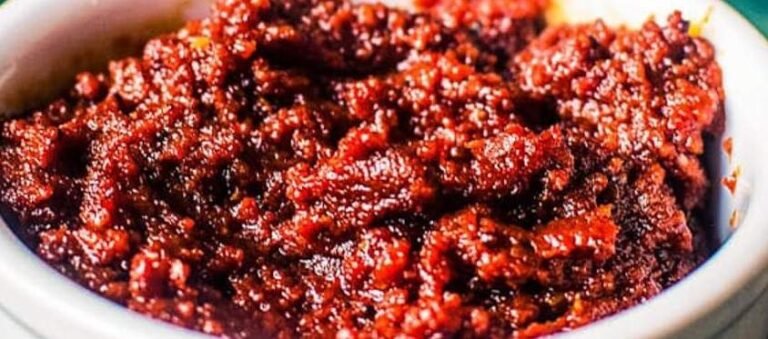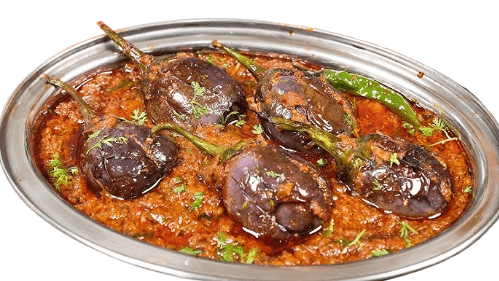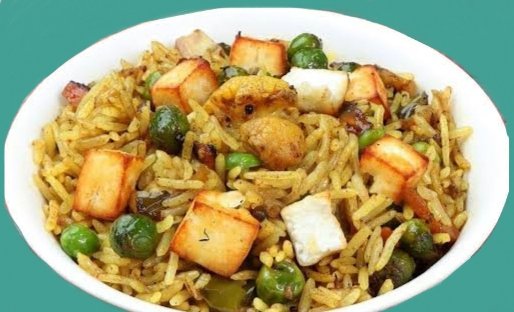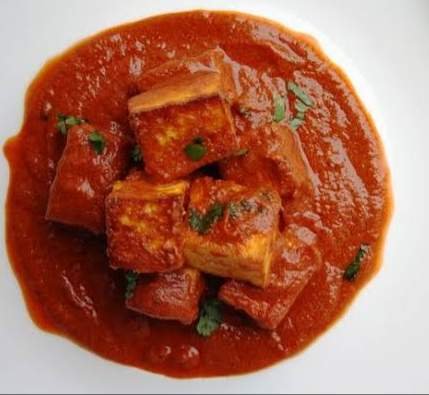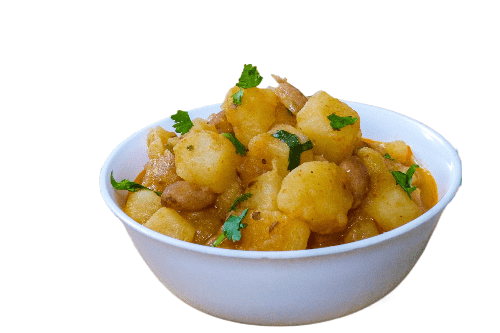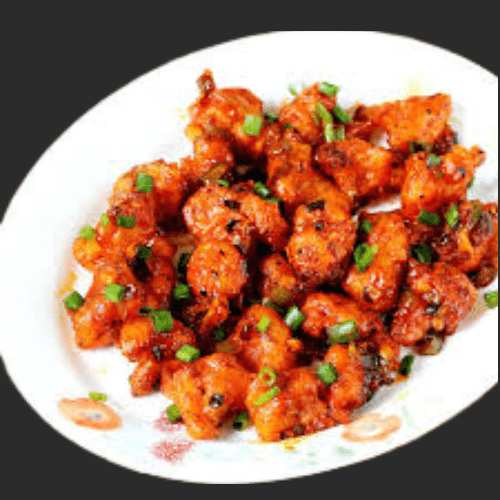Dalma Recipe
The Ultimate Guide to Making Authentic Dalma Recipe:
Dalma Recipe is a traditional dish from Odisha, a state in eastern India, known for its rich cultural heritage and delectable cuisine. Dalma is a wholesome, nutritious, and flavorful dish made primarily with lentils and a variety of vegetables. It is a staple in Odia households and is often prepared during festivals, special occasions, and even as a part of everyday meals. The simplicity of its ingredients, coupled with the depth of its flavors, makes Dalma a cherished dish across the region.
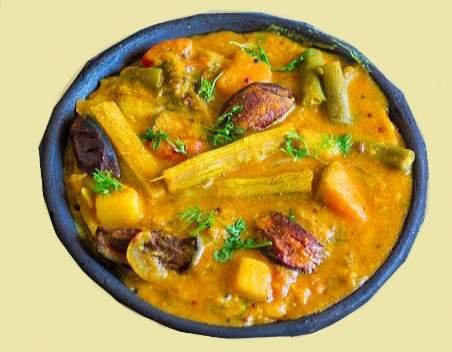
A Brief History and Cultural Significance of Dalma Recipe:
Dalma has been a part of Odia cuisine for centuries. It is believed to have originated in the kitchens of the Jagannath Temple in Puri, where it is offered as a part of the Mahaprasad (sacred food offered to Lord Jagannath). The dish is deeply rooted in the cultural and religious traditions of Odisha, and its preparation methods have been passed down through generations.
Dalma is not just a dish; it is a symbol of Odia hospitality and culinary expertise. It is often served during festivals like Rath Yatra, Durga Puja, and other religious ceremonies. The ingredients used in Dalma are simple, yet they come together to create a symphony of flavors that are both comforting and satisfying.
Ingredients of Dalma Recipe :
Before we get into the cooking process, let’s gather all the necessary ingredients. The following list is designed to serve 4-6 people:
For the Dalma :
- 1 cup split pigeon peas (toor dal)
- 1 medium-sized potato, peeled and cubed
- 1 medium-sized eggplant, cubed
- 1 medium-sized radish, peeled and sliced
- 1 cup pumpkin, peeled and cubed
- 1 cup raw banana, peeled and cubed
- 1/2 cup green beans, cut into pieces
- 1/2 cup drumsticks, cut into pieces
- 2 medium-sized tomatoes, chopped
- 1/4 teaspoon turmeric powder
- 1 teaspoon salt (or to taste)
- 4 cups water
For the Tempering Of Dalma Recipe :
- 2 tablespoons ghee (clarified butter)
- 1 teaspoon panch phoron (a blend of five spices: mustard seeds, fenugreek seeds, cumin seeds, nigella seeds, and fennel seeds)
- 2-3 dry red chilies
- 1/2 teaspoon asafoetida (hing)
- 1-2 bay leaves
- 1 teaspoon ginger paste
- 2-3 cloves of garlic, minced (optional)
- 1/2 cup grated coconut (fresh or desiccated)
- 1 teaspoon roasted cumin powder
- 1 teaspoon garam masala powder
- Fresh coriander leaves, chopped (for garnish)
Optional Ingredients Of Dalma Recipe :
- 1 teaspoon jaggery (for a touch of sweetness)
- 1 teaspoon tamarind paste (for a slight tanginess)
- 1 tablespoon roasted and ground coriander seeds
Step-by-Step Preparation Of Dalma Recipe :
Preparing the Dal and Vegetables For Dalma Recipe :
Wash and Soak the Dal: Start by washing the split pigeon peas (toor dal) thoroughly under running water. Soak the dal in water for about 1 hour. This helps in reducing the cooking time and ensures that the dal is cooked evenly.
Prepare the Vegetables: While the dal is soaking, wash, peel, and cut all the vegetables as mentioned in the ingredients list. Confirm that the vegetables are cut into uniform pieces to ensure even cooking.
Cook the Dal and Vegetables: In a large pot, add the soaked dal along with 4 cups of water, turmeric powder, and salt. Bring it to a boil on high heat. Once the dal starts boiling, add the chopped vegetables (potatoes, eggplant, radish, pumpkin, raw banana, green beans, and drumsticks). Cover the pot and let it simmer on low heat until the dal and vegetables are tender. This should take about 20-25 minutes.
Preparing the Tempering Of Dalma Recipe :
Heat the Ghee: In a separate pan, heat the ghee over medium heat. Once the ghee is hot, add the panch phoron and let it splutter. The blend of five spices adds a unique flavor and aroma to the dish.
Add the Dry Red Chilies and Asafoetida: Add the dry red chilies and asafoetida to the pan. Sauté for a few seconds until the chilies turn a darker shade and release their aroma.
Add Bay Leaves and Ginger Paste: Add the bay leaves and ginger paste to the pan. Sauté for 1-2 minutes until the raw smell of ginger disappears. If you are using garlic, add it at this stage and sauté until it turns golden brown.
Add Chopped Tomatoes: Add the chopped tomatoes to the pan and cook until they soften and release their juices. This should take about 5 minutes.
Add Grated Coconut and Spices: Add the grated coconut, roasted cumin powder, and garam masala powder to the pan. Mix well and cook for another 2-3 minutes until the coconut is lightly toasted and the spices are well incorporated.
Combining the Dal and Tempering :
Mix the Tempering with the Dal: Once the dal and vegetables are cooked, add the tempering to the pot. Mix well to combine all the flavors. Let it simmer for another 5-10 minutes to allow the flavors to meld together.
Adjust the Seasoning: Taste the dalma and adjust the salt and spices according to your preference. If you prefer a slightly sweet flavor, add the jaggery at this stage and let it dissolve completely. If you like a tangy taste, add the tamarind paste and mix well.
Garnish and Serve: Garnish the dalma with freshly chopped coriander leaves. Serve hot with steamed rice, roti, or even as a standalone dish. Dalma pairs wonderfully with a side of green salad and a dollop of ghee.
Tips of Dalma Recipe :
Quality of Dal Use fresh and good- quality dal for the stylish results. Old dal may take longer to cook and may not give the asked texture.
Thickness- The thickness of Dalma can vary according to particular preference. Some like it thick and chunky, while others prefer it slightly soupy. Acclimate the quantum of water consequently.
Vegetables- You can customize the vegetables grounded on what’s available and your preference. still, using traditional vegetables like pumpkin, raw banana, and hams gives an authentic taste.
Tempering- Tempering or” chaunk” is pivotal in Dalma as it enhances the flavour and aroma. insure that the spices don’t burn while tempering.
Serving Dalma– Serving Dalma tastes best when served fresh and hot. However, do so on low heat to maintain the flavors and texture, If you need to overheat it.
Variations of Dalma Recipe :
Dalma is a protean dish, and there are several indigenous and particular variations. Then are a many popular bones
Sajja Dalma :
Sajja Dalma is a special variation of Dalma where roasted moong dal( split green gram) is used rather of toor dal. This interpretation is frequently prepared during carnivals and special occasions. The roasted moong dal gives a distinct flavor and aroma to the dish.
Chana Dalma :
In this variation, chana dal( split Bengal gram) is used rather of toor dal. Chana Dalma has a slightly different texture and a nuttier flavor compared to the traditional Dalma. It’s inversely succulent and nutritional.
Plain Dalma :
Plain Dalma is a simpler interpretation where only a many introductory vegetables like potatoes and pumpkin are used. This interpretation is frequently prepared when you want a quick and easy mess. It’s light on the stomach and perfect for those days when you want a comforting coliseum of dal.
Phulauri Dalma :
Phulauri Dalma is a unique variation where small lentil galettes( phulauri) are added to the Dalma. The galettes add a pleasurable crunch and an redundant subcaste of flavor to the dish. This interpretation is frequently enjoyed as a special treat during gleeful occasions.
Nutritive Benefits of Dalma Recipe:
Dalma isn’t only succulent but also packed with nutritive benefits. Then are some reasons why you should include Dalma in your diet.
Rich in Protein :
Lentils are an excellent source of factory- grounded protein. They give essential amino acids that are pivotal for muscle form and growth. Including Dalma in your diet can help meet your diurnal protein conditions, especially for insectivores.
High in Fiber :
Dalma is rich in salutary fiber, thanks to the lentils and vegetables. Fiber aids in digestion, helps maintain healthy bowel movements, and can help constipation. It also helps in regulating blood sugar situations and reducing cholesterol.
Packed with Vitamins and Minerals :
The variety of vegetables used in Dalma provides a wide range of vitamins and minerals. Pumpkin is rich in vitamin A, potatoes give vitamin C, and green sap are a good source of vitaminK. also, lentils are rich in iron, folate, and magnesium.
Low in Fat :
Dalma is naturally low in fat, especially if you use minimum ghee for tempering. This makes it a heart-healthy option that can be enjoyed without fussing about redundant fat input.
Antioxidant parcels :
The spices used in Dalma, similar as turmeric, cumin, and gusto, have potent antioxidant parcels. They help in reducing inflammation and guarding the body against free radical damage.
Dalma in Odia Culture :
Dalma holds a special place in Odia culture. It’s further than just a dish; it’s a symbol of tradition, hospitality, and the rich culinary heritage of Odisha. Then are a many artistic aspects associated with Dalma
Carnivals and fests :
Dalma is an integral part of gleeful feasts in Odisha. During carnivals like Rath Yatra, Durga Puja, and Ganesh Chaturthi, Dalma is prepared as a part of the grand mess offered to divinities and served to addicts. The dish symbolizes chastity, simplicity, and the cornucopia of nature’s bounty.
Temple Immolations :
In numerous tabernacles across Odisha, Dalma is offered as prasad( sacred food) to divinities. The Jagannath Temple in Puri is particularly notorious for its Mahaprasad, which includes a variety of traditional dishes, including Dalma. Addicts believe that consuming this prasad brings blessings and godly grace.
Culinary Heritage of Dalma Recipe :
Dalma is a testament to the culinary moxie of Odia cookery. The use of locally available constituents, simple cuisine ways, and a perfect balance of flavors reflect the culinary wisdom passed down through generations. Dalma showcases the capability to produce succulent and nutritional dishes using humble constituents
Community cling of Dalma Recipe :
In Odia homes, preparing and participating Dalma is frequently a collaborative exertion. Families come together to hash vegetables, cook the dal, and enjoy the mess together. It fosters a sense of togetherness, love, and relating among family members.
Conclusion of Dalma Recipe :
Dalma is a dish that embodies the substance of Odia cookery. Its simplicity, nutritive value, and pleasurable flavors make it a cherished dish across Odisha and beyond. Whether you’re cooking it for a special occasion or as a comforting everyday mess, Dalma no way fails to impress.
By following the detailed way and tips handed in this companion, you can recreate the magic of authentic Dalma in your own kitchen. Enjoy the process of preparing this traditional dish, and savor the rich flavors and artistic heritage it brings to your table.
Happy cuisine and bon appétit!
